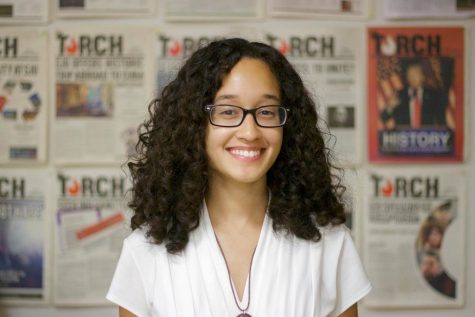St. John’s has made diversity on campus a priority in recent years.
Through accepting diverse students, hiring faculty of diverse backgrounds and pushing through initiatives such as the Inclusivity Resource Center department, the University has shown a commitment to diversity, equity and inclusion.
But the school has more work ahead.
Diversity in the faculty ranks has taken a hit in the past year following the departure of professors Dr. Raj Chetty, Dr. Rob Bland and Dr. Collin Craig.
Chetty, an Indian-American born in Minneapolis and raised in San Diego, and Bland, an African-American from Virginia, spoke to the Torch about their reasons for leaving. Craig did not respond to an interview request prior to publication.
“The longstanding struggle to recruit and retain black faculty and staff meant that black faculty at St. John’s were often doing double and triple duty for students and the larger campus community,” Bland said. “This emphasis on service would detract from research and personal life in a way that did not feel sustainable in the long run.”
Chetty added, “As a reform-minded professor interested in institutional change, what does it mean that students come to me and my friends and colleagues? I think I’m doing them a disservice because the University isn’t doing good by them and gets away because I am.”
In response, Brian Browne, a University spokesperson said diversity will continue to be a key factor in hiring, recruiting and retaining professors.
“St. John’s values faculty diversity as an important and contributing factor to academic excellence and we know that a diverse faculty and inclusive teaching and learning experiences have a positive impact on all students,” said Browne.
St. John’s is the eight most diverse college in the city, and number one in Queens — but that’s based mostly on student population, not faculty.
The most recent data available from the St. John’s University Office of Institutional Research shows that 29 percent of full-time faculty on campus were people of color. That’s as of Fall 2018. These three departures therefore represent a small — but still significant — portion of the University’s diverse faculty population.
“During the last three fiscal years, on average, 14 full-time faculty members voluntarily left the University for a variety of reasons,” Browne said. “There are varied and concomitant factors that influence faculty recruitment and retention including but not limited to the cost of living in NYC, the faculty tenure process and job offers from other colleges and universities.”
Chetty began at St. John’s in 2013 as an assistant professor in English for the St. John’s College of Liberal Arts and Sciences and specialized in literature and culture, postcolonial literary studies, black/african diaspora performance and performance studies.
Bland taught United States History at St. John’s, with his research focused on the African American experience during and immediately after the Reconstruction era.
Craig started at St. John’s in 2012 as an assistant professor and became an associate professor in 2018, according to his LinkedIn profile. His research focused on active investigation of black and Latino male literacies, identity politics, cultural rhetoric, gender and writing program administration.
Chetty and Bland told the Torch in separate interviews that they were both on tenure-track positions. Through tenure, professors are required to meet certain criteria by researching or publishing. Chetty said that unlike schools such as Harvard or Yale, St. John’s doesn’t provide sabbatical for professors at this stage. Bland said that puts pressure on tenure track professors to juggle their research efforts with their course teachings.
They also both said students sought them out for support.
“Helping students is one of the main reasons I became a professor,” Bland said, “but because there were so few faculty members of color at St. John’s, you end up doing a lot of work that potentially takes away from your research and teaching in a way that could hurt your chances for tenure.”
According to the United States Department of Education, the undergraduate student body at St. John’s is made up of 40 percent white students and almost 48 percent of diverse backgrounds — 17 percent black, 16 percent Asian, 8 percent Hispanic, 5 percent biracial, 1 percent American Indian / Alaska Native and less than 1 percent Native Hawaiian / Pacific Islander.
By contrast, the diversity rate within faculty is 29 percent, per the University spokesman.
The Department of Education categorizes racial identity as black/African American, American Indian/Alaska Native, Asian, Hispanic, two or more races or native Hawaiian/Pacific Islander. A concise way of describing this, is non-white.
“All Universities, including St. John’s, fail at really transformative hiring practices,” Chetty said. “Correspondingly, when people do get hired in the small numbers that they do, there isn’t a really good support system to keep them.”
St. John’s makes a priority of retaining diverse professors, Browne said.
“Recruiting and retaining diverse faculty is an important priority at St. John’s University and is an issue facing all institutions of higher education,” Browne said. “To that end 42% of all new faculty hired at St. John’s since Fall 2014 have come from historically underrepresented groups.”
In an interview with St. John’s President Conrado “Bobby” Gempesaw on Nov. 6, the Torch asked about how the University aims to retain diverse faculty in the importance that also contributes to the retention of students.
“I think we’ve done a good job in terms of gender and ethnic diversity hiring,” Gempesaw said. “Fifty-nine percent of our student body are female and so that’s a few years more than 50 percent of the faculty we hired who are also female and we’ve also increased the number in proportion of faculty of color that we hire.”
Gempesaw gave credit to the faculty, department chairs and deans as he broke down the hiring process that consists of specific steps.
“It starts with the department chair committee comprised of their faculty who recommends their chair and then the chair recommends to the dean and then the dean goes to the provost,” he said.
Gempesaw explained that although administration has a high role in recruiting new faculty, the hiring process also depends on the support from faculty and the student body to encourage diversifying the campus in terms of both gender and race.
Chetty and Bland both expressed their appreciation for the support they’ve received from students and how it has served as the main reason for their arrival at St. John’s and staying for as long as they did.
“The people who left and the people who stayed, and the people who stayed, we know why we stay,” Chetty said. “It’s because of [the students], we get to teach students.”
While the ongoing process of building a diverse community on campus is still in the works, Bland expressed his gratitude for the efforts made by students and current faculty.
“The faculty of color at St. John’s have been doing incredible work offering exciting courses on subjects students care about, building community for students who feel marginalized, and trying to make St. John’s a better place,” he said. “Many white allies on the faculty have also been invaluable in amplifying some of the concerns to administration.”
He continued,“I believe that the ongoing work on the part of students and faculty of color to hold the university accountable to its commitment to diversity is beginning to bear some fruit. It appears that important and neglected structural changes have begun to occur on campus.”









